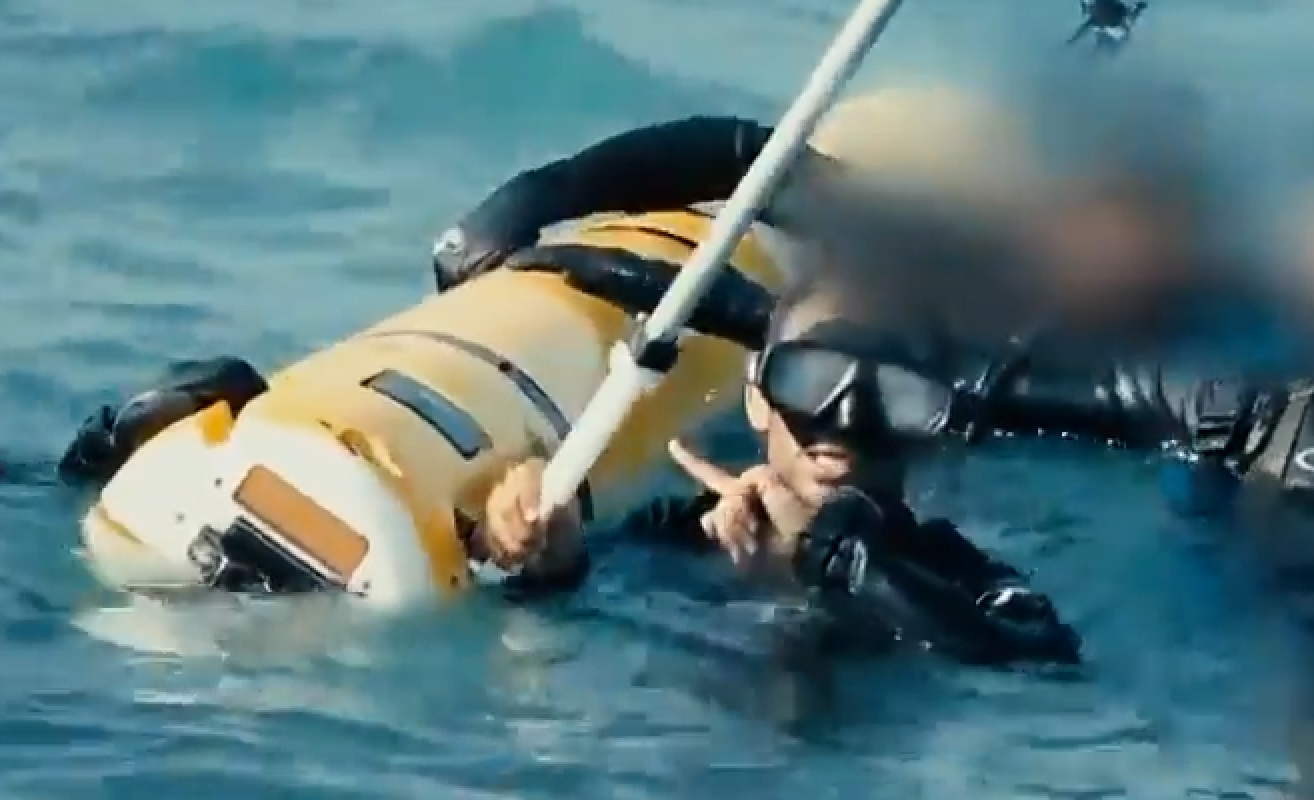
Houthi forces have captured a U.S. Navy research unmanned underwater vehicle off the coast of Yemen, according to a video released on Monday.
In the video posted online by local media on Monday, four men described as members of the “Houthi Navy” in dive gear are surrounding what appears to be a REMUS 600 UUV with the name “Smokey” printed on the body. According to the AMN News web posting, the Houthis discovered the UUV within the past week somewhere off the coast of Yemen.
The UUV, branded with the logos from manufacturer Hydroid and parent company Kongsberg, was a passive system being operated by the Navy as part of a meteorological study, a U.S. defense official told USNI News on Tuesday.
The video claimed the craft was operated by the Saudi coalition, which has been fighting the Houthi Yemeni separatist group since 2015.
U.S. Navy officials in Washington and at U.S. 5th Fleet would neither confirm whether if the REMUS 600 belonged to the service nor provide details about any unmanned underwater vehicle missions in the region when asked by USNI News.
“It is intended to operate in shallow waters, intended to operate in littoral spaces, and is designed to be pretty autonomous,” Dan Gettinger, co-director of the Center for the Study of the Drone at Bard College, said about the REMUS 600.
“It might be the most advanced UUV deployed.”

The REMUS 600 is between 9 and 18 feet long, depending on the mission and payload, and can travel at about 4.5 knots, according to online fact sheets from Kongsberg Gruppen, the manufacturer. REMUS 600 was initially developed in 2003 through a partnership with the U.S. Navy and the Woods Hole Oceanographic Institute.
While other countries and a few corporations such as oil and gas exploration firms own REMUS 600 UUVs, Gettinger said they’re not common. The REMUS 600 isn’t cheap, with a sticker price of about $1 million each, he said, plus add-on kits for specific missions.
Typically, the most common Navy uses for a REMUS 600 are mine countermeasures and intelligence, surveillance, reconnaissance and target acquisition (ISRTA), Gettinger said.

Typical uses include studying underwater environmental conditions, meteorological research, and underwater mapping of terrain and currents.
What makes the REMUS 600 so useful for the Navy is its payload and ease in deploying. Gettinger said it typically only requires a patrol boat to put a REMUS 600 in the water.
Once underway, he said the REMUS has about 20 hours of operational use before it runs out of power and needs to be recovered. Gettinger guesses the UUV surfaced when its mission ended and was found by the Houthis before it could be recovered. In the future, he suspects such incidents will become more common as more unmanned underwater vehicles are launched near busy waterways.
“Underwater drones are not as frequently spoken about as UAVs (unmanned aerial vehicles),” Gettinger said. “But there’s a recognition, particularly in China and Russia, these will be a part of a future fleet.”
In 2016, a People’s Liberation Army Navy seized a U.S. Navy buoyancy glider that was operating in the South China Sea, claiming it was a hazard to navigation. The PLAN ultimately returned the gilder to the U.S. Navy.





